The Art of Mosaic
History, Development, and Evolution
Mosaic art, characterized by intricate patterns and designs created by arranging small pieces of materials such as glass, stone, ceramic, or other substances, has been a significant form of visual art for millennia. Known for its durability and versatility, mosaics have adorned the walls, floors, and ceilings of public and private spaces, leaving behind a profound artistic legacy. This article delves into the history and development of mosaic art, exploring its origins, evolution through different cultures, and its role in both ancient and modern art scenes.
Origins of Mosaic Art
Mosaic art dates back to the early civilizations of Mesopotamia and the ancient Near East. The earliest known mosaics date from around the 3rd millennium BCE in Mesopotamia, where tiny pieces of colored stones were used to create decorative patterns. This early form of mosaic was primarily used for architectural decoration, marking the beginning of an artistic tradition that would grow and spread across various cultures.
Mosaic in Ancient Civilizations
The true flourishing of mosaic art, however, took place in the Mediterranean region. The Greeks and Romans, in particular, adopted and perfected the craft, turning it into a sophisticated art form.
-
Greek Mosaics: The Greeks are credited with developing the art of mosaic as we know it today. By the 5th century BCE, the Greek influence on mosaics became evident, particularly through the use of small, precisely cut pieces of stone or glass. Early Greek mosaics were often used in the decoration of floors in private homes, portraying geometric designs, nature scenes, and mythological subjects.
-
Roman Mosaics: Roman mosaics evolved from Greek traditions, with more elaborate designs and scenes, especially during the Roman Empire. Mosaics became an essential element of Roman interior decoration, often depicting intricate scenes of mythology, battles, and everyday life. Notably, Roman mosaics were used in public buildings, baths, and villas, showcasing not only artistic skill but also the wealth and sophistication of Roman society. The use of tesserae, small square pieces of stone, glass, or marble, became widespread during this period.
Byzantine Mosaics: A Golden Age
One of the most significant developments in the history of mosaics occurred during the Byzantine Empire (4th-15th century CE). Byzantine mosaics are renowned for their religious subject matter, especially in churches, where they adorned walls, domes, and floors.
-
Religious Themes: The Byzantine Empire was a Christian state, and thus, the mosaics of this period primarily depicted religious figures such as Christ, the Virgin Mary, saints, and scenes from the Bible. These mosaics were not only decorative but served a didactic purpose, educating the illiterate masses about biblical stories and Christian teachings.
-
Materials and Techniques: Byzantine mosaics were characterized by the use of gold leaf and glass tesserae, which reflected light and created a luminous effect. The intricate designs and vibrant colors served to symbolize the divine presence in sacred spaces. Some of the most famous examples of Byzantine mosaics include those in the Hagia Sophia in Istanbul and the Basilica di San Vitale in Ravenna, Italy.
Mosaic Art in the Islamic World
Mosaic art also flourished in the Islamic world, particularly during the Umayyad and Abbasid Caliphates. Islamic mosaics were often used in architectural ornamentation, with a focus on geometric patterns and arabesques rather than figurative imagery, in adherence to Islamic aniconism.
-
Architectural Decoration: Islamic mosaics were commonly found in the decoration of mosques, palaces, and other public buildings. The most notable examples of Islamic mosaic art include the intricate tilework of the Alhambra in Spain and the Dome of the Rock in Jerusalem. These mosaics featured elaborate geometric patterns and floral motifs, which were both visually captivating and symbolic.
Mosaic Art in the Renaissance and Beyond
Although mosaic art experienced a decline in the medieval period, it saw a resurgence during the Renaissance. During this time, artists rediscovered classical techniques and incorporated mosaics into their works, particularly in the decoration of churches and palaces.
-
Renaissance Mosaics: Italian Renaissance artists such as Raphael and Michelangelo were involved in designing mosaics for major religious and civic buildings. The Vatican’s St. Peter’s Basilica, with its mosaic-covered dome, remains one of the most iconic examples of Renaissance mosaic art. The use of mosaics in the Renaissance was often integrated with painting, blurring the lines between the two media.
Modern Mosaic Art
In the modern era, mosaic art has undergone significant transformations. While traditional mosaic techniques remain popular, contemporary artists have explored new materials and innovative approaches.
-
20th Century Innovations: The early 20th century saw the rise of new materials such as ceramic tiles and synthetic glass in mosaic works. Artists like Antoni Gaudí, whose work on the Sagrada Familia in Barcelona features groundbreaking mosaic designs, reinterpreted the traditional medium in bold and dynamic ways.
-
Mosaics in Public Art: Mosaic art has also become a popular medium for public art projects. Artists use large-scale mosaics to transform urban spaces, creating vibrant and lasting works that engage the community. Mosaics can be found in parks, subway stations, and other public venues, blending art with architecture and making the medium more accessible to the masses.
Conclusion
The history of mosaic art is a testament to the enduring nature of this intricate and vibrant art form. From its ancient origins to its modern-day resurgence, mosaics have adapted to the changing needs of society, from religious devotion to public expression and personal creativity. The rich cultural heritage embedded in mosaic art continues to inspire contemporary artists, ensuring that this ancient technique remains a relevant and vital part of the artistic landscape.
As mosaic art continues to evolve, its blend of tradition and innovation ensures that it will continue to play a significant role in the visual arts for centuries to come.



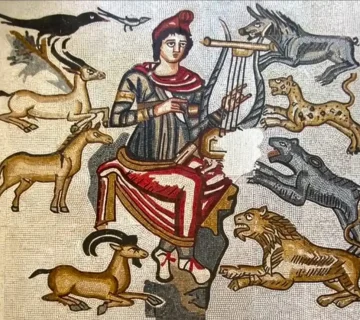
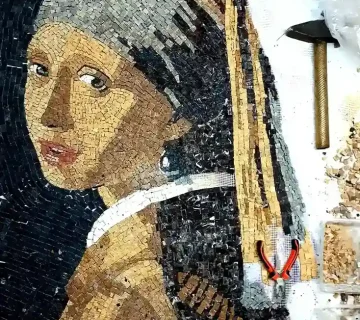
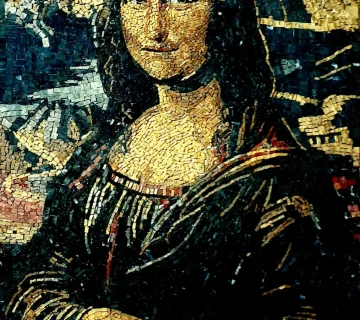
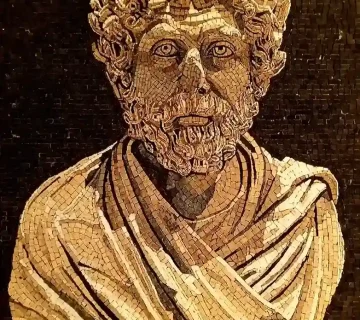
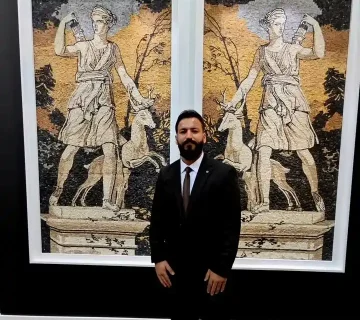

Yorum yok